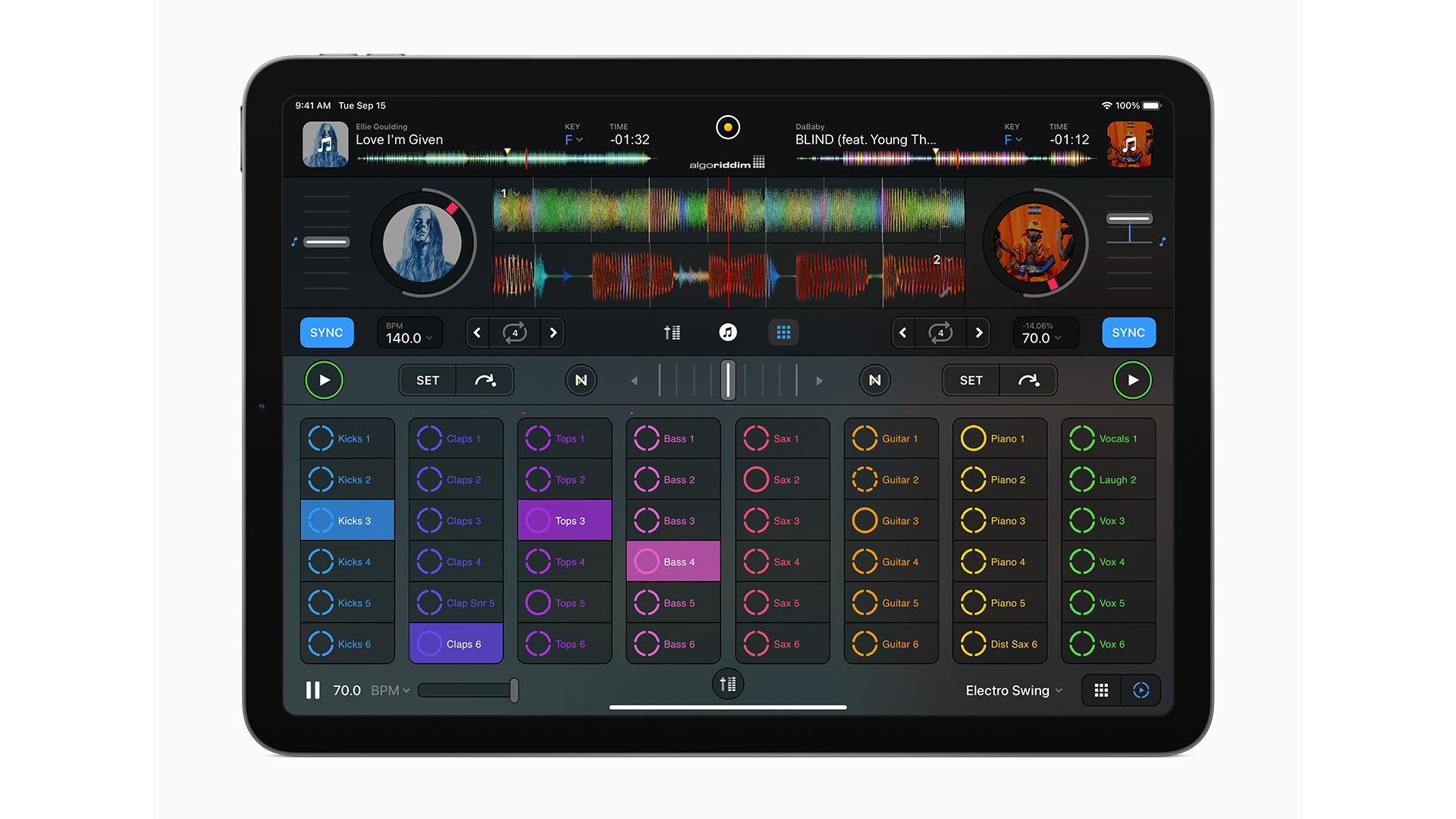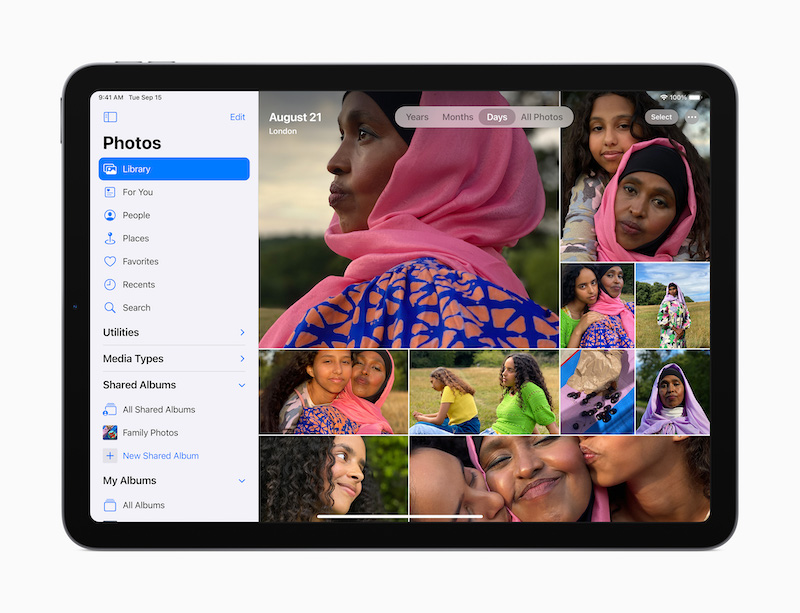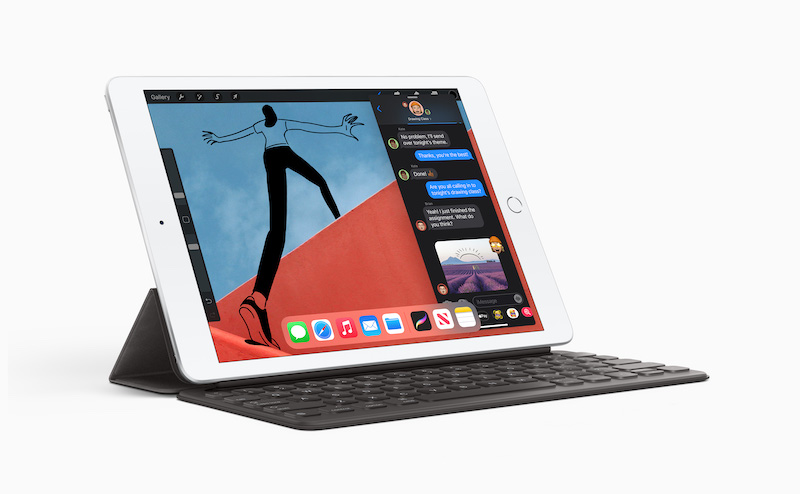
On the tenth anniversary of the original iPad’s launch, the mid-range iPad Air steps into the spotlight with an upgrade that swipes a slew of features from the high-end Pro model, including an all-screen design, USB-C and 12MP rear-camera with 4K video.

The new iPad Air, containing the world's first 5nm CPU. Image: Apple.
Without COVID-19, this article would likely be detailing the 2020 5G iPhones that now seem set to debut in October. However, it’s hard to begrudge the iPad Air 2020 its moment with an upgrade as aggressive as this.
Most notable of all is the first appearance of the 5nm A14 chip that will be at the heart of this year’s iPhones and is the foundation for Apple Silicon Macs.
Apple claim to be the first with a 5-nm process chip which crams in 11.8 billion transistors - or 40% more than last year’s 7-nm A13. The A14 features 4 high-efficiency cores and two high performance cores and is oriented to support parallel processing, blending core output for peak performance and battery life efficiency. The transistor bump also allows for a new Neural Engine that doubles its core count to 16 with 11 TOPs of performance - twice the A13. There’s also an advanced image signal processor which we didn’t hear much about now, but is likely to headline with iPhone.
The A14 Bionic is basically two generations ahead of the A12Z in the 2020 iPad Pro, which was a minor update from A12X in the 2018 Pro. A hefty caveat here is that the Pro has a custom iPad chip, meaning more cores, whereas the Air is likely making do with the exact same chip as the iPhone.

The 2020 iPad Air. Image: Apple.
Given this difference in architectures, like-to-like comparisons are difficult and Apple took care to avoid any comparison between the Air and 2020 Pro, instead pointing to this year’s best-selling Windows laptop in its price range (Air has 2x faster graphics). In terms of CPU performance, Apple’s presentation indicated A14’s single core performance will outperform Intel’s i9, but this wasn’t the event to go too deep into A14.
As a demo, we did get a slick DJ Pro app that cleverly used the camera to enable gesture-based controls and a 3D mech game - War Robots - that was noticeably enhanced with more subtle shading etc compared to a version running on an older iPad. It was not, however perhaps the best-time to mention console-quality graphics with PS5 on the horizon and xCloud gaming uncertain to pass App Store rules. An updated version of Pixelmator Photo made a better case for the Air with new machine-learning based image enhancement. Adobe Illustrator - not shown at the event - is also due in mid-October.
Returning to the Pro comparison, there’s no 120Hz ProMotion high refresh rate, there’s no Face ID so Touch ID moves to the top button, copying a feature common to Android devices. The Air gets landscape stereo, but with two speakers rather than four. There’s also no LIDAR sensors and RAM, while not specified, is likely less. These are slender differentiators to justify more costly Pro models, but the Air’s price increase, differing storage options and Pro model discounts make it more complicated than it first seems. The Air also gets compatibility with the new Magic Keyboard (with trackpad) and Pencil 2 snaps to the top of the Air just as was pioneered with the Pro. USB-C also opens the door to far faster data transfers than Lightning and can also directly drive a USB-C 4K monitor.
If there weren’t supply chain rumours of a micro-LED iPad Pro in 2021, it would be tempting to speculate the Air had killed off the premium iPad.
The iPad Air is available to order now and will ship in October with six colours to choose from. There is however a sting in the tail with price - 64GB now starts at £579, while a more roomy 256GB is £729 and cellular bumps it to £709/£859. Add in a 11-inch Magic Keyboard with trackpad at £299 and you’re lurching into Intel MacBook Air / Pro territory - particularly with the discounts that periodically surface these days. A new Logitech Folio Touch keyboard at nearly 50% less is a good alternative, but how the overall value matrix plays out when Apple Silicon MacBooks debut is going to be very interesting.
A key theme running through the iPad presentations was flexibility - the ability to take an iPad anywhere and use in ways where a laptop wouldn’t make sense. How much that flexibility matters to you is at the heart of the Air’s appeal.

8th generation iPad. Image: Apple.
Entry-level iPad
The new 8th generation iPad starts at £329 for 32GB / 128GB with cellular adding £130, but it’s the entry-level and education discount that anchor this iPad’s value proposition. The look and feel is the same as before with the familiar Touch ID button at the bottom of the screen and Lightning connection, but the internals are upgraded with an A12 chip - the iPhone version rather than the Pro’s A12Z - but this still means a neural engine as a first on the base iPad. Compared to the previous gen iPad, there’s a 40% increase for CPU, twice as fast graphics and, according to Apple, is twice as fast as the bestselling Windows laptop, three times as fast as the bestselling Android tablet and six time as fast as the bestselling Chromebook.
Given how iPad apps, of which there are over a million in the App Store, target much earlier A-Series processors, there’s no doubt this will feel blazingly fast in most applications. There’s less RAM than on the Pro models, but image processing, video editing and new iPadOS14 features like handwriting recognition will be smooth. As before it supports Apple Pencil and the Smart Keyboard from Apple, plus there’s Logitech and other third-party keyboard support.
Other news
As expected, the ‘Time Flies’ event opened with an update of the Apple Watch line-up - headlined by Apple Watch 6 with new blood oxygen sensor, S6 chip, more colours and new watch faces. There’s also a more value oriented, mid-range Apple Watch SE, while Series 3 remains as the entry-level. There was also the reveal of new Apple One subscription bundles, offering basic and premium combinations anchored with iCloud storage and including a Watch related Fitness+ subscription.
iOS 14 is now
At the close of the event, there was one final twist with Tim Cook revealing iOS 14, iPadOS 14, WatchOS 7 and tvOS 14 would all ship on September 16th. Admittedly these have been in public beta for some time, but for developers aiming to best leverage its new features - particularly the rich widgets - it was an unprecedented lack of notice for developers fine-tuning their updates. It might be that developers that normally aim to dazzle on launch day will end-up waiting until new the iPhones ship. Certainly the avalanche of app updates is likely to be stilted this year and cautious types might prefer to stay on 13 for a little while yet.

Comments